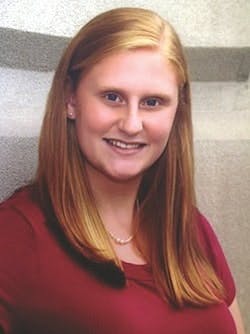About the author: Amalie Sonneborn is a sophomore at St. Lawrence University and co-president of the university’s Enivronmental Action Organization. Sonneborn can be reached at [email protected]. Amy McIntosh is associate editor for Water Quality Products. McIntosh can be reached at [email protected] or 847.954.7966.
The Environmental Action Organization (EAO) at St. Lawrence University in Canton, N.Y., recently won a grant from the New York State Pollution Prevention Institute to reduce the use of disposable water bottles on campus. WQP Associate Editor Amy McIntosh spoke with Amalie Sonneborn, co-president of EAO, about the goals of the campaign.
Amy McIntosh: What is the mission of EAO?
Amalie Sonneborn: EAO is a student-led club at St. Lawrence University. The club aims to encourage the student body’s involvement in both education- and action-based environmental and sustainable practice campaigns. Our organization provides the St. Lawrence University community with opportunities to achieve the university’s environmental goals. By creating a culture for student-led action, we provide a support network for any environmentally focused activity on campus, as well as the opportunity to collaborate with other campus groups.
McIntosh: Tell me about the grant you applied for to reduce the use of disposable water bottles at St. Lawrence University.
Sonneborn: We applied for our project to take part in the New York State Pollution Prevention Institute’s third annual Research and Development Greenovate New York State Student Competition (NYSP2I). This competition rewards chosen teams with $1,000 to fund an environmentally focused project that will better the greater campus community.
Our project, St. Lawrence Reuse, is striving to create a campus-wide social atmosphere shift away from the use of disposable plastic water bottles. In the past, other students have attempted to eliminate the option of disposable bottles on campus; however, they were unsuccessful.
Our team concluded that the main reason the university continues to sell bottled water is that the student body continues to buy it. Hopefully, if social change is achieved, the university will no longer profit from the selling of disposable bottles on campus, and, in turn, the option will no longer be economically feasible to provide.
McIntosh: How has the campaign been received on campus?
Sonneborn: The campaign is still being carried through, and we are currently in the advertisement phase. We have been hanging thought-provoking posters around campus that bring attention to the issues surrounding the regular use of disposable water bottles. We have attempted to focus the message of these posters on the themes of college life, which draws the attention of those passing by.
Many students in EAO have mentioned campus-wide discussion, involving both students and faculty, surrounding the posters and the message they epitomize. As a member of the EAO leadership team, it has been very rewarding to hear other students discussing issues that we believe are important, and we feel very proud that our campaign is what prompted that dialogue.
McIntosh: What is in store for the future of the campaign?
Sonneborn: We are very excited about the future of our campaign, especially because our early stages have been so successful. We plan on screening documentaries that not only educate people about the importance of water conservation, but also encourage environmentally conscious decisions.
Another crucial component to our campaign is the sale and distribution of reusable bottles. This will equip the student body with not only the physical alternative to disposable bottles, but also the education needed to make better, long-lasting environmental decisions.
We will conclude our campaign with a report and presentation on what we learned at the NYSP2I competition exhibition in April. Overall, we hope that our message will continue to inspire the student body and community long after the conclusion of our campaign
Download: Here
